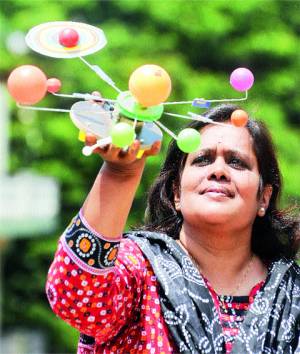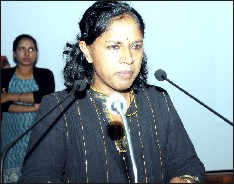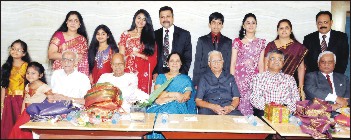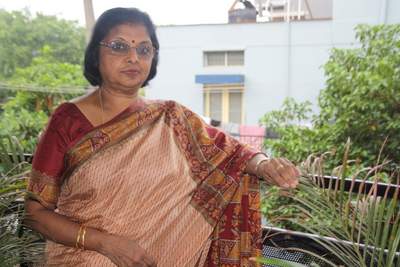
Even as hospitals increasingly adopt cloud computing, there are still a lot of hurdles in the way.
Dr Devi Shetty, Chairman and MD, Narayana Hruduyalaya(NH) wants to change the dynamics of healthcare in India. He is changing the dynamics of hospitals by setting up beds at the lowest cost, in as little time as possible. To facilitate this, NH recently tied up with HCL Infosystems to leverage cloud computing technologies for various applications. Dr Shetty reckons this partnership will help them to set up 10,000 affordable beds and keep healthcare costs low.
Similarly, last year, HCG set up Centre of Excellence for cancer care with the help of Siemens. As a part of this collaboration, Siemens will work with HCG to develop software, undertake R&D and conduct training programmes. These will provide better alternatives to clinicians and more effective treatment to patients.
Last year, Mumbai-based SevenHills Hospital opted for a high performance network from CommScope. The 20 million sq. ft. hospital has more than 15,000 network outlets. The hospital has many vital systems connected to its networks and needed a constant, real-time view of what is happening robust cabling system. In May, Max Healthcare deployed Dell’s services and created an information technology ecosystem with the adoption of Healthcare Information and Management Systems Society (HIMSS). According to Max Healthcare, it has achieved ‘Stage 6′ on the Electronic Medical Record (EMR) adoption model, which indicates that a large portion of patient records are electronic with minimal usage of paper charts. “Max Healthcare’s physicians receive evidence-based alerts as they enter electronic orders for their patients and a closed-loop medication administration system to maximise safety processes,” said Dr Ajay Bakshi, CEO & MD, Max Healthcare.
This is a change from earlier days when hospitals preferred to develop their own IT systems and manage it. However, due to lack of skill sets and costs associated with engineers, healthcare providers have resorted to outsourcing. “We feel that technology is best managed by specialists and at the same time reduce our capex which is consistently going up,” said Dr Shetty.
As hospitals start adopting IT, the market for technology in India is growing. ‘A recent trend in healthcare is the use of mobile devices to review medical images,” said a senior official from Siemens Healthcare.
Specialist hospitals face a huge problem in terms of training their physicians and all this adds considerably to a hospital’s costs, which in turn is passed on to the patients. “The earlier trend used to be of clinicians travelling overseas for training and research and development. Now they will be trained in India at HCG. The collaboration with Siemens is a step in this direction,” said Dr B.S. Ajaikumar, Chairman, HCG.
According to management consulting firm Zinnov, cloud computing in the Indian healthcare sector will be an estimated $600 million by 2020. Current healthcare spending stands at $54 billion and is expected to reach $164 billion by 2019-20. Also, the estimated annual IT spending within existing hospitals in India is approximately $191 million currently and is expected to reach a $1.5 billion by 2020. Hospital chains like Apollo, Fortis and others have adopted IT and are looking at newer ways to provide healthcare services.
Other factors that are driving the adoption of IT systems are the emergence of medical tourism, accreditation and the increasing use of health insurance. Electronic Healthcare Record Communication (EHRs) and Picture archiving and communication system (PACs) are likely to be the biggest opportunities in the market. Patient administration systems will also see high interest. The Confederation of Indian Industry (CII) estimated that the medical technology market in India is at $2.75 billion in and pegged it at $5 billion by the end of 2012.
TECHNOLOGY STILL AILING
Despite the adoption of technology there is still considerable room for more that can impact all the stakeholders in the ecosystem, according to Mr Harsh Chitale, CEO, HCL Infosystems. Hospitals can provide better care and manage costs better internally and patients can look for lower healthcare costs (in case of regular checkups).
“In India a majority of the healthcare providers do not talk to each other. So, there is no way a large blood bank puts out information on shortages in real time or exchange patient related information,” said Nitin Khanapurkar, Executive Director, Advisory Services, KPMG India. Agrees Mr Laxman K. Baliga, COO, Anthelio Business Technologies. Indian healthcare market is underpenetrated for IT systems and services. “It is also a highly price-sensitive market. Vendors will need to have India-specific strategies and pricing. The spending will be largely driven by large corporate hospitals and government,” he said.
This problem is accentuated when you look at the numbers. About 90 per cent of secondary and tertiary healthcare facilities in India are in cities and towns, far away from the rural areas where 68 per cent of the population lives. Hence, remote areas continue to suffer from the absence of quality healthcare facilities. What’s more, due to the poor conditions of rural health centres it becomes impossible to retain doctors in villages.
Telemedicine was touted as an answer to some of the ills. It refers to the use of telecommunications for the diagnosis and treatment of diseases using technologies like video conferencing from distant places. However, telemedicine has not taken off as expected. In the majority of cases, the requisite infrastructure has yet to be laid down and, even in places where it is already available, the costs are high. Bandwidth constraints lead to the non-transmission of images or very low quality ones being beamed. In most cases, doctors would settle for viewable images, but some require high definition ones, according to the head of a leading hospital chain who did not wish to be named.
There are power shortages in rural areas and this in turn makes patients to go to the closest town for undergoing a diagnosis. Hospitals on their part say that technology costs are high and they are grappling with manpower shortages.
India has one doctor for every 1,700 patients while the ideal doctor-patient ratio is about 600 patients for every doctor. Even in China and Brazil, a doctor attends between 900-950 patients while in the US the doctor-patient ratio is 1:390. This throws up a gap of 1.4 million doctors and 2.8 million nurses, according to World Health Organisation (WHO) norms. The gap in demand-supply scenario becomes starker in rural areas when you consider the fact that 60% of healthcare resources including doctors, skilled nurses and paramedics reside in the urban centres as per the India Health Ministry Report 2010.
The per capita spend on medical technology in India is about $2 as against $5 for China and $231 for Germany. Also, CII rues poor legal backing for medical technology segment. “It has no separate legal status and is regulated by Drug Controller General of India,” according to a CII official. As per the Planning Commission, India is short of 6 lakh doctors, 10 lakh nurses and 2 lakh dental surgeons.
Then there is the issue of privacy of patient records that risk being stolen or lost. Despite most companies following international information security norms for healthcare like HIPPA, HL7 and DICOM, technologies like cloud throw up these challenges and make it more complicated than in the earlier days when IT infrastructure was within the premises of a hospital.
Some hospitals like NH who plan to work on newer models that have the potential to change the economics of healthcare services as conventionally known are hoping that technology could aid them in their journey. As Victor Hugo once said, “Nothing is powerful as an idea whose time has come”. Indian care givers should take note of that.
(With inputs from K.V. Kurmanath)
venkatesh.ganesh@thehindu.co.in
source: http://www.TheHinduBusinessLine.com / Home> Features> EWorld / by Venkatesh Ganesh




